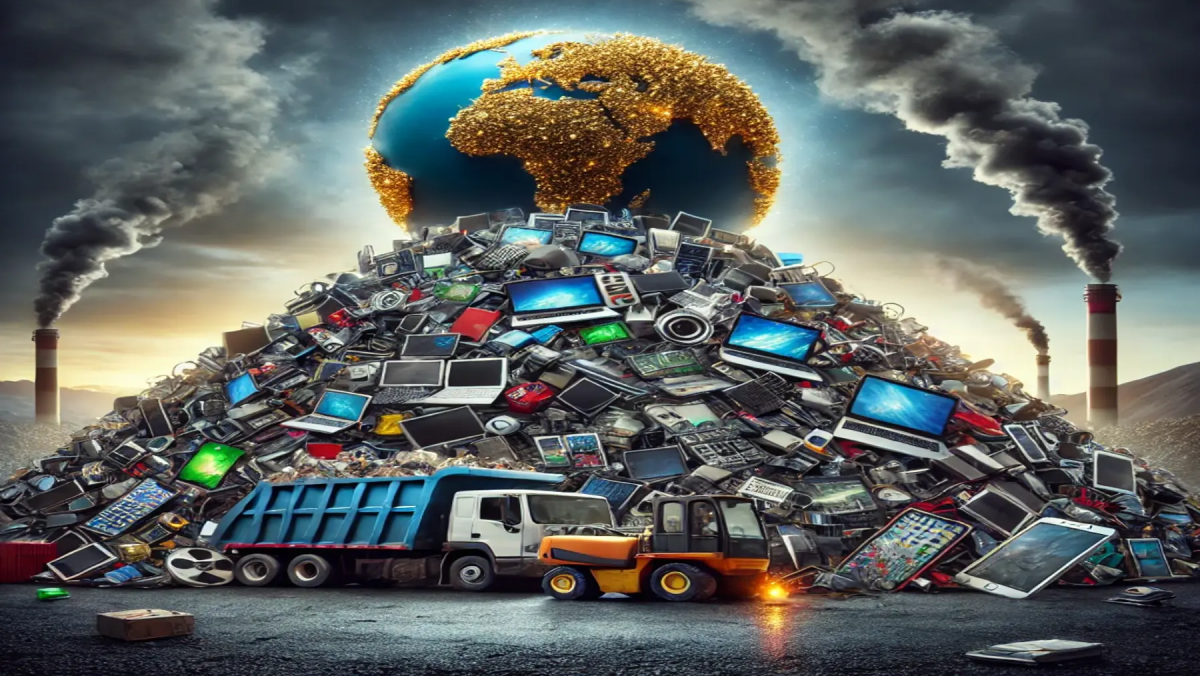Now Reading: E-Waste Crisis: The Hidden Cost of Modern Electronic Devices 2025
-
01
E-Waste Crisis: The Hidden Cost of Modern Electronic Devices 2025
E-Waste Crisis: The Hidden Cost of Modern Electronic Devices 2025

Table of Contents
Electronic devices have become an essential part of our lives. From smartphones and laptops to televisions and kitchen appliances, these gadgets are everywhere. But as we keep upgrading our devices and tossing out the old ones, a serious problem is growing electronic waste, or e-waste.
E-waste Crisis is one of the fastest-growing waste streams in the world. According to the Global E-waste Monitor 2024, over 62 million metric tons of e-waste were generated worldwide in 2023 alone. That’s roughly 7.8 kilograms for every person on Earth. And the numbers are rising rapidly, with estimates predicting over 80 million metric tons by 2030.
So what’s behind this massive amount of waste? The simple answer: electronics. They are the top contributors to global e-waste Crisis, and the problem is only getting worse.
Why Electronics Are a Major Source of E-Waste
- Rapid Technological Change:
Technology evolves quickly. A new phone model comes out every year, and many people upgrade even if their current device still works. This trend is especially common with smartphones, laptops, and smartwatches. - Short Product Lifecycles:
Many electronics are not built to last. Manufacturers often release devices that become obsolete within a few years. Some even stop software updates after a short time, making older devices less useful or secure. - Poor Recycling Systems:
Only about 17% of global e-waste is formally collected and recycled. The rest ends up in landfills, burned, or shipped to developing countries where it’s often handled unsafely. - Consumer Habits:
People often store old gadgets in drawers or throw them away with regular trash. Many are unaware of proper disposal methods or find it inconvenient to recycle electronics.
What’s Inside E-Waste and Why It’s Dangerous
E-waste Crisis is not just a pile of old phones and broken chargers. It contains many materials that are both valuable and harmful.
- Toxic elements like lead, mercury, cadmium, and brominated flame retardants can leach into soil and water, harming ecosystems and human health.
- Rare metals like gold, silver, palladium, and cobalt are used in small amounts in electronics. If recovered, these could reduce the need for mining.
When e-waste Crisis is not handled properly, it can release dangerous chemicals into the air, water, and soil. In countries where informal recycling is common, workers often including children—are exposed to toxic substances without proper safety equipment.
The Global Impact of E-Waste
The environmental and social consequences of e-waste are alarming:
- Pollution: Burning or improperly dumping e-waste releases toxins into the air, soil, and water.
- Health Risks: Communities near e-waste processing sites suffer from respiratory issues, skin problems, and developmental disorders.
- Resource Loss: Valuable metals worth billions are lost every year when electronics are discarded instead of recycled.
Developing nations are the most affected. Many developed countries export their e-waste, legally or illegally, to countries in Asia and Africa where it’s cheaper to process. These nations often lack proper recycling infrastructure, and the waste becomes a local hazard.
What Can Be Done? Solutions for a Cleaner Future
Solving the e-waste Crisis problem requires action at multiple levels from individuals and companies to governments and global organizations.
- Design for Durability and Repair:
Tech companies must create products that last longer and are easier to repair. Modular designs can allow users to replace parts instead of buying new devices. - Right to Repair Laws:
Several countries, including those in the EU, have introduced or are considering laws that allow consumers to repair their devices rather than replacing them. This can greatly reduce e-waste. - Better Recycling Infrastructure:
Governments should invest in better recycling systems, make collection points more accessible, and ensure safe handling of toxic materials. - Producer Responsibility:
Electronics manufacturers should be responsible for collecting and recycling their products. Some companies now offer take-back programs, but more widespread adoption is needed. - Consumer Awareness:
People need to be educated about the importance of recycling electronics. Knowing where to drop off old gadgets can make a big difference. - Buy Less, Use Longer:
As consumers, we can choose to buy only what we need, opt for quality over quantity, and keep our devices as long as possible.
India’s E-Waste Challenge
India is the third-largest generator of e-waste in the world, after China and the United States. In 2023, the country generated over 3.2 million metric tons of e-waste Crisis, and the number is expected to grow.
The Indian government has introduced the E-Waste (Management) Rules, requiring producers to collect a certain amount of e-waste Crisis and ensuring environmentally sound disposal. However, enforcement remains a challenge. Most recycling in India is still handled by the informal sector, where safety and efficiency are low.
More investment in formal recycling centers and better cooperation between the public and private sectors is urgently needed.
Final Thoughts
E-waste Crisis is a silent crisis. Every time we upgrade to a new phone or discard an old gadget, we contribute to a global problem that affects the environment, health, and future generations. Electronics may be small, but their impact is huge.
We must rethink how we buy, use, and dispose of electronics. It’s not just about recycling it’s about responsibility.
Read More:- Shobha Realty Launches Its Most Luxurious Project Yet—Full Details Inside 2025






















